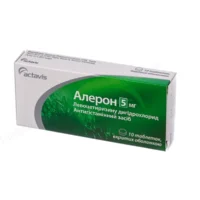Description
Avamis Nasal Spray (Fluticasone Furoate) 27.5 mcg/dose 30 doses №1
Composition
Active Ingredient: Fluticasone furoate
Other Ingredients: Microcrystalline cellulose, carboxymethylcellulose sodium, dextrose, polysorbate 80, purified water, benzalkonium chloride
Mechanism of Action
Fluticasone furoate, a corticosteroid, exerts anti-inflammatory effects in the nasal mucosa, reducing symptoms of allergic rhinitis such as nasal congestion, sneezing, itching, and runny nose.
Pharmacological Properties
Belonging to the corticosteroid class, fluticasone furoate acts locally to alleviate inflammation in the nasal passages without significant systemic side effects commonly associated with oral corticosteroids.
Indications for Use
Avamis Nasal Spray is indicated for the treatment of allergic rhinitis symptoms in adults and children aged 2 years and above.
Contraindications
Avoid using Avamis Nasal Spray if there is a known hypersensitivity to fluticasone furoate or any other components of the formulation.
Side Effects
Common side effects may include nasal irritation, epistaxis, headache, and unpleasant taste. Consult a healthcare provider if any adverse reactions persist.
Usage Instructions
Dosage: Administer 2 sprays into each nostril once daily. Do not exceed the recommended dose.
Administration: Shake gently before use. Prime the pump before initial use. Insert the nozzle into one nostril, close the other nostril, and press the pump while inhaling gently through the nose.
Benefits Compared to Analogues
Avamis has demonstrated efficacy comparable to other intranasal corticosteroids in relieving nasal congestion and allergy symptoms, as evidenced in clinical studies.
Suitable Patient Groups
Avamis is suitable for use in children aged 2 years and older, as well as in the elderly population. However, individual response may vary, and a healthcare provider’s advice is recommended.
Storage and Shelf Life
Storage: Keep at room temperature, protected from moisture and heat. Ensure the bottle is tightly closed when not in use.
Shelf Life: Check the product packaging for the expiration date and do not use beyond that point.
Packaging Description
The product is available in a packaging containing 30 doses of 27.5 mcg fluticasone furoate per spray.
Clinical Evidence and Effectiveness
Studies have shown that fluticasone furoate in Avamis Nasal Spray effectively reduces allergic rhinitis symptoms by targeting nasal inflammation. Clinical trials have proven its efficacy in improving nasal symptoms and quality of life in patients with allergic rhinitis.
In a comparative study featured in the American Journal of Rhinology & Allergy, Avamis was found to be equally effective as other intranasal corticosteroids in alleviating nasal congestion and other allergy-related manifestations.





